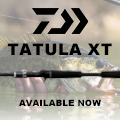10 tps for fishing Buoy 10, where the Columbia River meets the Pacific
The Buoy 10 fishery, where the Columbia River meets the Pacific, offers anglers a chance to catch Chinook and coho salmon fresh from the ocean.
Patience and big-water boating skills are a must for Buoy 10 anglers. Jimmy Watts, Oregon DFW Columbia River fish biologist and avid Buoy 10 angler, offers these additional tips:
1
Wait. While the fishery technically opens Aug. 1, it can be a few weeks until the fishing really heats up. Once it does, expect good coho fishing through at least mid-September.
2
Target Chinook early, coho late. Early in the season, most anglers target Chinook. However, the Chinook season usually closes earlier, and the fishery transitions to predominately coho.
3
Pay attention to the tides 1.0. The tides in and out of the mouth of the Columbia will have a huge impact on fishing. Incoming tides bring in cooler ocean water, more bait fish and, ultimately, more salmon.
The best bite is usually the first hour of the high slack tide to the ebbing tide.
4
Pay attention to the tides 2.0. The change from high slack tide to an ebbing tide, while good for fishing, also can be a dangerous time for boaters. If the west wind is blowing, the Buoy 10 area gets very rough during the ebb tide. The key is to be close to your takeout as the tide goes out so you don’t have to fight the waves in a heavy current.
If you put in above the Astoria-Megler Bridge, stay above the bridge during the slack and ebbing tides. To fish the lower river, stay closer to takeouts like Hammond during this time.
For safety reasons, avoid Clatsop Spit and the Astoria shipping channel during the tide runout.
5
Fish where the fish are. That means fishing with your bait/lure suspended in the water column during the incoming tide, and on the bottom during the outgoing tide.
During late August and September, the tides become less critical but the general guideline still works well – fish suspended on the incoming and on the bottom during the outgoing tide.
6
Use divers when fishing suspended and lead when fishing the bottom. It’s possible to fish divers on the outgoing tide, but you’ll need to carefully match the depth of your diver to the water depth.
7
Carry both bait and hardware. Some days the fish prefer bait and the next day they key in on hardware. A versatile angler is a successful angler, so if one approach isn’t working switch to the other.
8
Familiarize yourself with charts of the fishing area and use a fish/depth finder for success and safety. There are dangerous shoals in the Buoy 10 fishing area you should know about before you get there. A depth finder will help you avoid running aground on shallow shoals and shelves once you’re actually on the water.
A fish finder also will help you “see” how deep fish are suspended in the water column. And where you should be fishing.
9
To catch more fish, spend more time on the water. This may seem obvious, but planning a “quick trip” to the Buoy 10 fishery won’t necessarily set you up for success. Plan on spending the day on the water, and let water and fishing conditions determine your quitting time.
10
Consider hiring a guide. The two best times to hire a guide to fish Buoy 10 are:
If you don’t have a boat or salmon fishing gear, or a friend who does, a guided trip is about the only way to experience this popular fishery.
After a day or two without success, a professional guide can show you their keys to success. Anglers with some experience under their belt will often benefit the most from a day of fishing with a guide.
For updated fishing reports and current regulations, visit the Columbia Zone of the weekly Recreation Report.
Copyright © 2013-2024 WesternBass.com ®




































 Advertising
Advertising